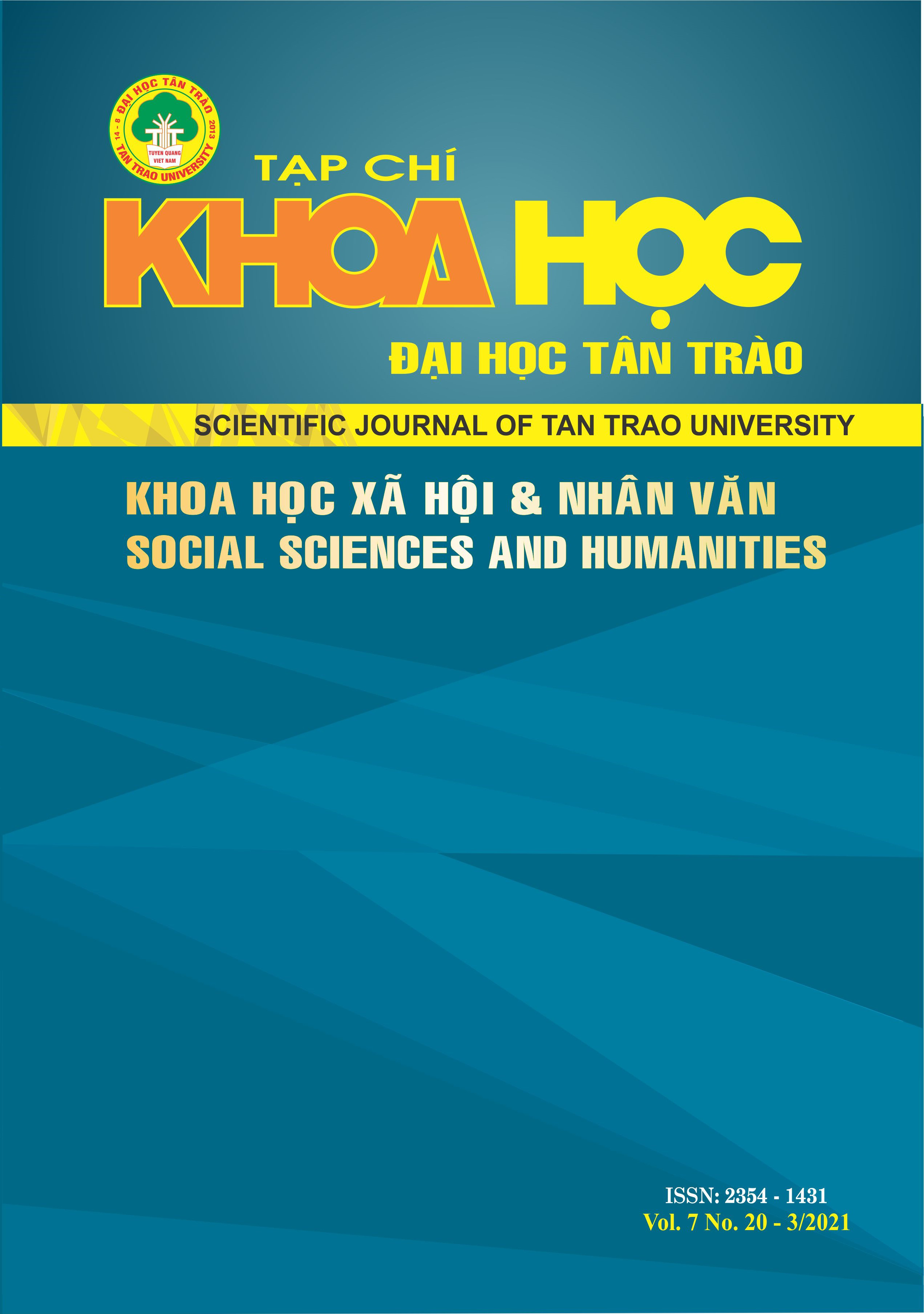CHINH PHỤC NHỮNG TỪ TRỪU TƯỢNG: BÀI HỌC TỪ NHỮNG NGƯỜI ĐỌC NỖ LỰC
DOI:
https://doi.org/10.51453/2354-1431/2021/478Từ khóa:
Từ trừu tượng, ngÆ°á»i Ä‘á»c ná»— lá»±c, phát triển ngÆ°á»i Ä‘á»c, TrÆ°á»ng trung há»c quốc gia SagavenTóm tắt
Trường Trung học Quốc gia Cagayan (SNHS) ở Asuncion, Davao del Norte, đã có những cuộc tranh luận lâu dài về vấn đề kỹ năng đọc. Kết quả khảo sát các học sinh lớp 7 của tổ chức Đánh kỹ năng đọc thông thường của Philippines (PIRI) đã cho thấy một thực trạng đáng báo động đối với các học sinh bậc trung học cơ sở. Khoa Giáo dục trung học thuộc Trường Đại học Sư phạm và Công nghệ đã thực hiện dự án “Mùa hè anh em: Học tập là một dự án thú vị”- dự án thuộc chương trình: Phương pháp tiếp cận nâng cao khả năng đọc tích hợp để phát triển người đọc- Từ cộng đồng đến nghiên cứu trường hợp có sự tham gia. Dự án được triển khai trong 3 năm với mục đích biến đổi người đọc từ cấp độ “thất bại” lên cấp độ “bậc trung”. Bằng phương pháp Nghiên cứu có sự tham gia (PAR), Dự án đã giúp những người đọc ở cấp độ “thất bại” phát triển những kỹ năng cần thiết không chỉ để hiểu ngôn ngữ viết thông thường mà quan trọng hơn là hiểu được những từ trừu tượng. Kết quả nghiên cứu này cũng phù hợp với những phát hiện của Mc Taggart (1997) tại nghiên cứu về khuyến khích phát triển năng lực và nâng cao năng lực của tất cả những người tham gia. Kết quả chỉ ra rằng nguyên nhân khiến những người đọc mặc dù nỗ lực nhưng thất bại trong kỹ năng đọc của họ là do họ đang gặp phải nhiều vấn đề nghiêm trọng trong xã hội. Do đó, việc cải tiến trong chương trình đọc hiện tại là rất cần thiết để đáp ứng nhu cầu ngày càng tăng liên quan đến kỹ năng đọc hiểu của người đọc.
Tải xuống
Tài liệu tham khảo
[1] Franz, V. (2011). What Do Reading Levels Mean? Retrieved from http://www.thudcave.com/~lamplighter/index.htm on December 2, 2018.
[2] Gafney, M. (2008). Participatory Action Research: An Overview
What makes it tick? KAIRARANGA Volume 9.
[3] Garrett, J. (2012). The Reading Experience: How Struggling and Non-struggling Readers Differ. Retrieved from: https://fisherpub.sjfc.edu/education_ETD_masters.
[4] Hempenstall, K. (2015) What are these Matthew Effects? Retrieved from https://www.nifdi.org/blog-hempenstall/399-what-are-thesematthew-effects on December 4, 2018.
[5] Jennings, Caldwell, Lerner. (2014). Reading Problems: Assessment and Teaching Strategies Retrieved from https://www.pearsonhighered.com/assets.
[6] Lestrud, M. (2013) Reading Skills. In: Volkmar F.R. (eds) Encyclopedia of Autism Spectrum Disorders. Springer, New York, NY.
[7] Margolis, H. (2019), Struggling readers have no time to lose: Social-emotional learning. Retrieved from https://exclusive.multibriefs.com/content/struggling-readers-have-no-time-to-lose-social-emotional-learning/education
[8] Morgan, Farkas and Wu. (2015). Sci Stud Read.
[9] Shepherd, N. (2017). Helping non-readers grades 4-12. Retrieved from https://silo.tips on January 18, 2021.
[10] Stanovich, K. (1986), Matthew effects in reading: Some consequences of individual differences in the acquisition of literacy. Reading Research Quarterly, 22, 360-407. Retrieved from http://www.readingrockets.org/articles/researchbytopic/4862 on December 4, 2018.
[11] Wright, P., Wright, P. (2018) What is the Matthew Effect? Retrieved from www.wrightslaw.com/ info/test/mattew.effect.htm on December 6, 2018.
[12] The Reading Foundation. (2021). https://www.readingfoundation.org/the-impact
Tải xuống
Đã Xuất bản
Cách trích dẫn
Số
Chuyên mục
Giấy phép

Tác phẩm này được cấp phép theo Giấy phép Quốc tế Creative Commons Attribution-ShareAlike 4.0 .
Bài báo được xuất bản ở Tạp chí Khoa học Đại học Tân Trào được cấp phép theo giấy phép Ghi công - Chia sẻ tương tự 4.0 Quốc tế (CC BY-SA). Theo đó, các tác giả khác có thể sao chép, chuyển đổi hay phân phối lại các bài báo này với mục đích hợp pháp trên mọi phương tiện, với điều kiện họ trích dẫn tác giả, Tạp chí Khoa học Đại học Tân Trào và đường link đến bản quyền; nêu rõ các thay đổi đã thực hiện và các nghiên cứu đăng lại được tiến hành theo cùng một bản quyền.
Bản quyền bài báo thuộc về các tác giả, không hạn chế số lượng. Tạp chí Khoa học Tân Trào được cấp giấy phép không độc quyền để xuất bản bài báo với tư cách nhà xuất bản nguồn, kèm theo quyền thương mại để in các bài báo cung cấp cho các thư viện và cá nhân.
Mặc dù các điều khoản của giấy phép CC BY-SA không dành cho các tác giả (với tư cách là người giữ bản quyền của bài báo, họ không bị hạn chế về quyền hạn), khi gửi bài tới Tạp chí Khoa học Đại học Tân Trào, tác giả cần đáp ứng quyền của độc giả, và cần cấp quyền cho bên thứ 3 sử dụng bài báo của họ trong phạm vi của giấy phép.






